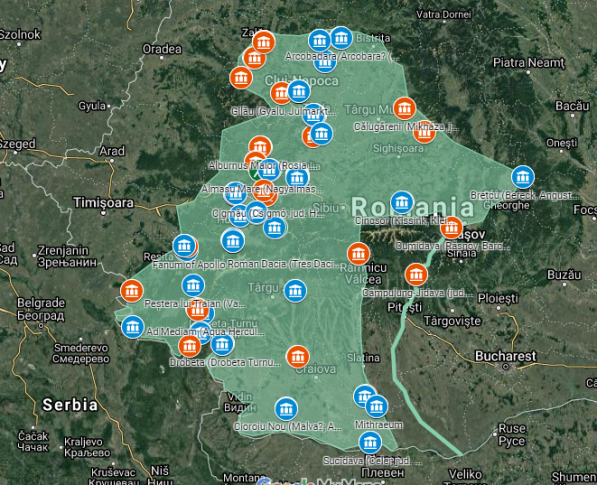The province of Roman Dacia is one of the last territories conquered by the Roman Empire and one of the earliest, which was left already in the late 3rd century AD. Still, in less than 170 years, Romans changed the natural environment, built at least 10 urban centers, 100 legionary or auxiliary forts and around 300 other military buildings, more than 4000 inscriptions and thouands of other figurative monuments, small finds and other archaeological material. This huge materiality of Roman presence will mark deeply the history of this area of Europe even after the collapse of the Empire. The Roman heritage marked not only the history of the people from the Balkans – especially the neo-latin speaking Romanians – but also the cultural, economic and political events in early Medieval and also, during the Renaissance period. The Roman heritage was always known in ethongraphic traiditions, foklore, and since the 15th century built and used in the political and cultural narratives and identities in the 19th and 20th century.
The academic study of Roman Dacia produced thousands of articles and books in the last 150 years. Only on Roman religion there are around 1400 titles “produced” in the last two centuries.
However, in the last few years, digital humanities changed also the study of Roman Dacia. There are numerous studies already available online in academia.edu or Sci-Hub. The EDH Epigraphic Database from Heidelberg has now more than 3500 inscriptions of the province, the Clauss-Slaby has 4222 inscriptions online. A complex and interactive population database is available for Dacia on the Romans1by1 project.
More than 2200 figurative monuments were photographed by Ortolf Harl from Roman Dacia and inclued in his amazing lupa.at project. Without the CSIR volumes of Romania – which are still not done – the work of Harl is indispensable. Few objects from Dacia are digitized also in the LIMC and Arachne projects. A part of the Roman bronz statuettes are available online too. Numerous books and articles on Roman Dacia are digitized by the National Institute of Heritage on their CIMEC.ro page too. 3468 arhaeological sites from Roman period are included in the National Archeological Repertory. 12.000 archaeological objects are introduced in the National Heritage, however many of them are without photographic documentation and only a part of them are from the Roman era. The archaeological sites of the Roman Limes are under documentation by the National Limes Comission. A very useful holistic digital map of the Roman Empire you can find also on the vici.org page. Numerous other cartographic representations of the Roman World – the ORBIS, Pelasgios or the Barington map – represents also Dacia.
The coin hoards of the province were systematically published by C. Găzdac. Cities, mines and other economic unites were also included in the various databases of the Oxford Economic Project. The RGZM has also numerous databases on terra sigillata, or Roman provincial archaeology, each with few mentions on Dacia too.
Finally, as part of my project focusing on Roman religious communication in the Danubian provinces, I finished the Digital Atlas of Roman sanctuaries from Dacia.
Sanctuaries of Roman Dacia
Wednesday, February 8, 2023
Roman Dacia in the digital era
Subscribe to:
Post Comments (Atom)







No comments:
Post a Comment